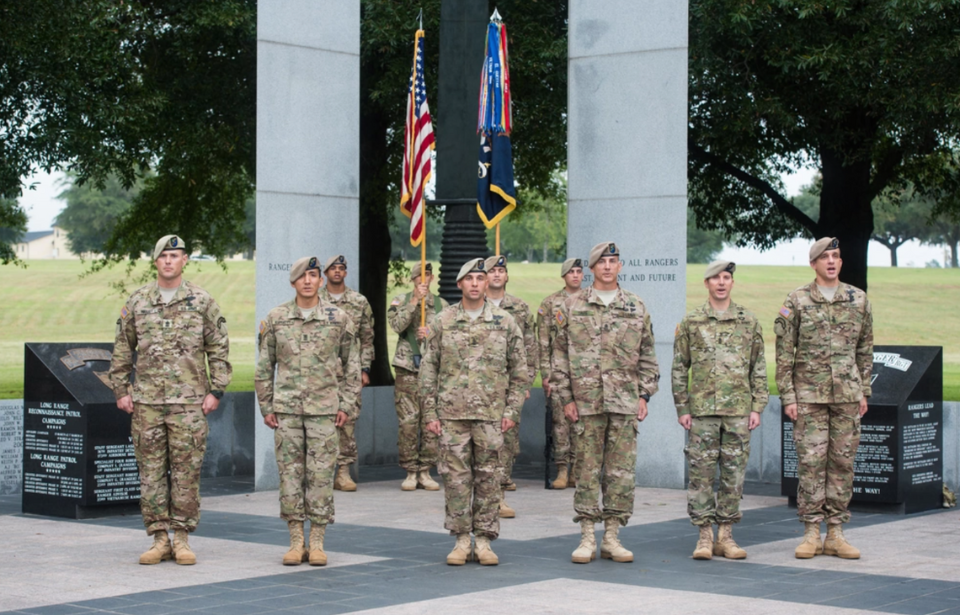Over 100 retired US Army Rangers have signed a letter to Congress, in which they “strenuously object to the defacement and desecration of the National Ranger Memorial” at Fort Moore, Georgia. Dating back to the mid-1990s, the monument features several Confederate-era names that the Department of Defense’s Naming Commission has since recommended for removal.
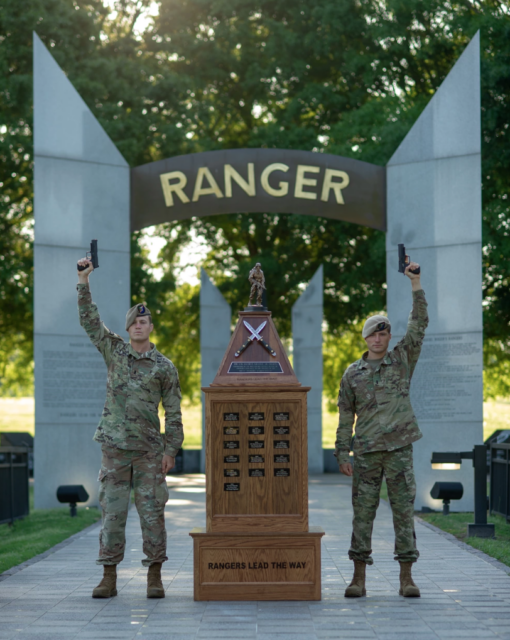
The letter, written by Brig. Gen. Joseph Stringham, the chairman of the National Ranger Memorial Foundation, is dated May 23, 2023 and directed at Speaker of the House Kevin McCarthy (R-CA) and US Rep. Mike Rogers (R-AL). Sent to the House Armed Services Committee, it speaks out against the removal of four names related to the Confederacy.
“The National Ranger Memorial Foundation is deeply troubled by the recent decision of the leadership of Fort Moore (formerly known as Fort Benning) to remove the names of certain Rangers from the Ranger Memorial,” it reads, adding, “We express grave concern for the impact of this decision on the families of those named, who are being denied the recognition and honor their loved ones earned through their brave service to our country.”
While the letter doesn’t specify the names, a previous one from Stringham, dated April 28, 2023, said that Col. Colin Mahle, the garrison commander at Fort Moore, had directed the National Ranger Memorial Foundation to remove four names: Jackson and George Bowman, William Quantrill, and Col. John S. Mosby.
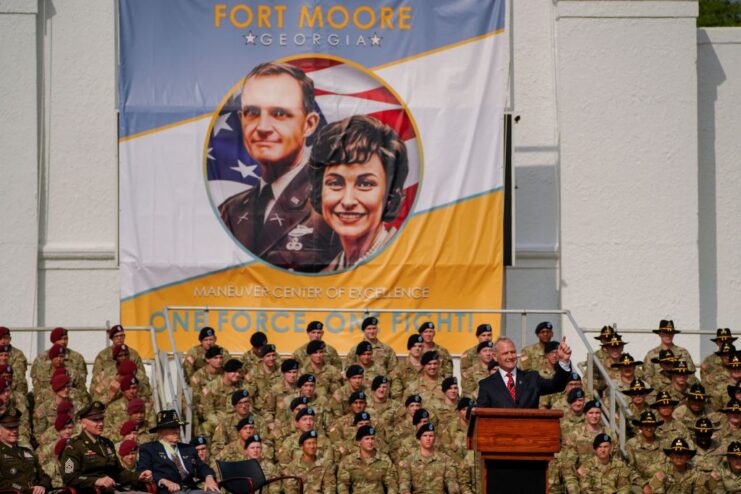
As aforementioned, the decision to remove the names from the National Ranger Memorial is based upon a September 2022 report by the Naming Commission, which recommended the removal of names related to the Confederacy from US military assets, including vehicles, bases and streets.
Thus far, several bases have had their names changed, including Fort Benning, which was changed to Fort Moore; Fort Hood, renamed Fort Cavazos; and Fort Liberty, which was previously named Fort Bragg. They’d been named for Confederate figures Gen. Henry L. Benning, John Bell Hood and Braxton Bragg, respectively.
The report recommended the removal of Mosby’s name from the National Ranger Memorial itself and from the National Infantry Museum’s Ranger Hall of Hame. The names of Quantrill and the two Bowmans were suggested for removal from the pavers that lead up to the memorial.
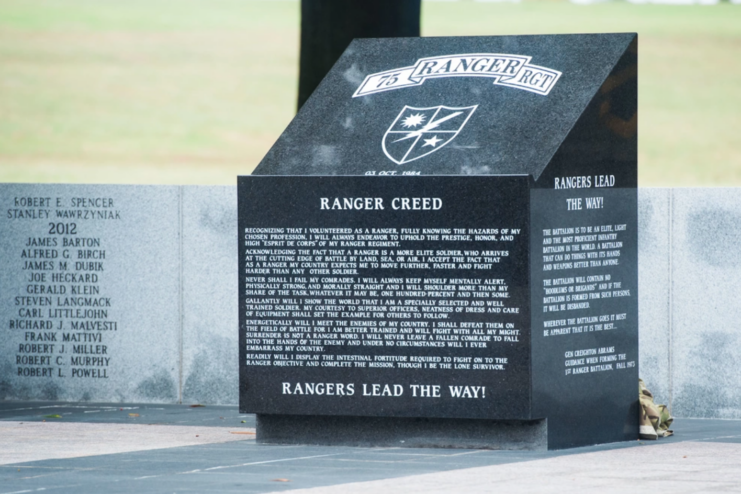
While the National Ranger Memorial Foundation disagrees with removing references to Mosby and the Bowmans, they do agree that Quantrill’s name should be stricken, saying, “Past leadership erred in approving its placement at the memorial.” Throughout the American Civil War, he led a group of guerrillas who conducted murderous raids on Union cities.
Mosby was a lawyer who aligned himself with the Confederacy. He subsequently became a cavalry commander who led effective raids against the Union forces, earning him the nickname, “Gray Ghost.” Following the war, he reconciled with US officials and went on to serve under President Ulysses S. Grant‘s Administration. Along with becoming an assistant US attorney general, he was also the US consul to Hong Kong.
The Bowmans both served under Confederate Brig. Gen. John Hunt Morgan, with whom they conducted raids across several states.
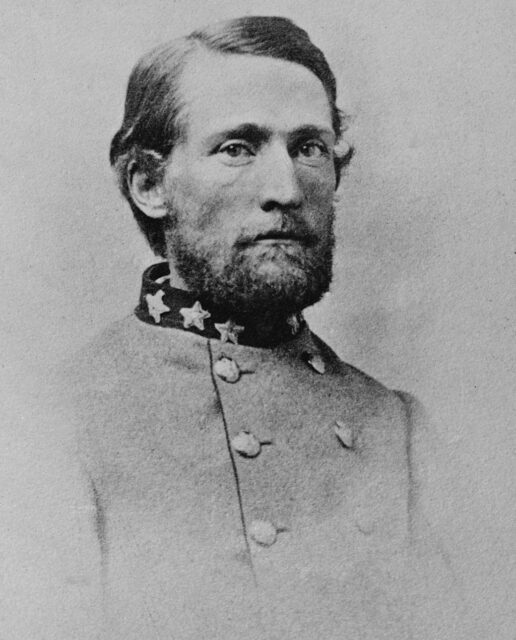
“This decision undermines the integrity and significance of the Memorial itself, which stands as a symbol of the sacrifice and dedication of our Nation’s Rangers,” the letter continues. “In attempting to address the abominable treatment of our citizens of African descent, Fort Moore leadership has unfortunately taken a one-size-fits-all approach, which is itself abominable treatment of other citizen groups.”
It continues, “We urge all Americans to join us in the fight to overturn this directive and protect the legacy of our heroes as we stand in solidarity with the affected families and pledge to safeguard and defend the Memorial,” adding, “We must remember and learn from our history, but we must not erase it.”
A spokesperson from Fort Moore has since responded, saying base officials are simply following orders from the Department of Defense. “In accordance with the William M. (Mac) Thornberry National Defense Authorization Act (NDAA) for Fiscal Year 2021 […] and as directed by the secretary of defense, Fort Moore initiated the removal of Ranger memorial assets identified in the Naming Commission’s recommendations.
“This work is planned to be completed by Jan. 1, 2024. Fort Moore consulted with the National Ranger Memorial Foundation about these actions.”
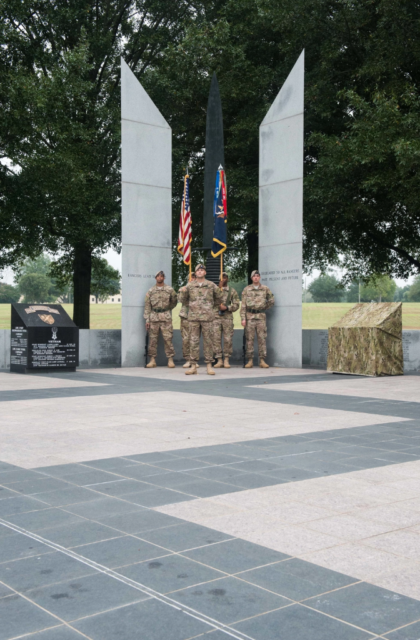
More from us: ‘More Than Fitting’ – Mel Gibson Speaks Out About Fort Benning Being Renamed for Hal and Julie Moore
Fort Moore is home to the US Army’s Ranger School, as well as the headquarters for the 75th Ranger Regiment. It also holds the annual Best Ranger Competition. The National Ranger Memorial features over 4,600 stones with the names of Rangers who’ve served and has become the site of several important ceremonies.
